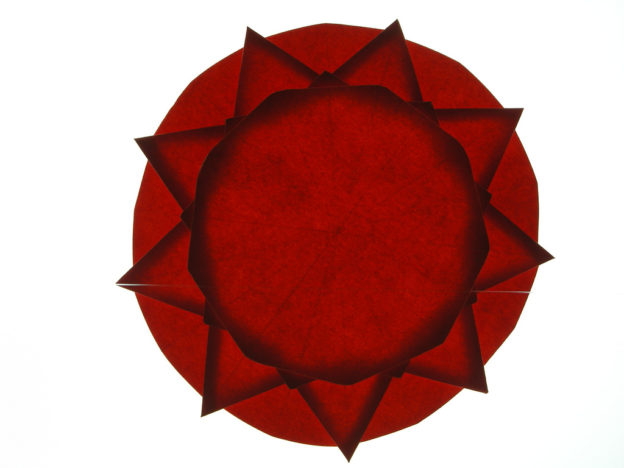“The five stages of grief – denial, anger, bargaining, depression, and acceptance – are a part of the framework that makes up our learning to live with the ones we lost. They are tools to help us frame and identify what we may be feeling. But they are not stops on some linear timeline in grief.” Elizabeth Kubler-Ross, best-selling author on death and dying.
“Sustainable development is the pathway to the future we want for all. It offers a framework to generate economic growth, achieve social justice, exercise environmental stewardship and strengthen governance.” Ban Ki-moon, a South Korean politician who served as the eighth secretary-general of the United Nations between 2007 and 2016
“Without a moral framework, there is nothing left by immediate self-indulgence by some and the path of least resistance by others. Neither can sustain a free society.” Thomas Sowell, an African American economist, author, and social commentator who is a senior fellow at the Hoover Institution.
From the beginning of my career, I have been fortunate to have frameworks to guide my thinking. In my experience, effective frameworks free you instead of limit you. While many people resist frameworks because they experience them as confining, I see them as launching pads for generating new ideas.
One of the first frameworks I was introduced to in my first job at the Kalamazoo County Jail was a framework for the Art of Helping by Robert Carkhuff. In this model, a helper attends to a person seeking help in order to engage them. Then the helper responds to the person’s feelings and values to facilitate a deeper exploration of who they are and what’s most important to them. Next, the helper personalizes the person’s experience so that he or she can understand specific goals and roles. Finally, the helper initiates a possible direction or perspective that enables the person to act on their understanding – the helping relationship moves from unconditional to conditional. Without action, there is no understanding.
There is abundant room for freedom in each of the stages of this helping process, just as there is room for completely different experiences for grieving in the Kubler-Ross model. The value in having a framework is that it signals possibilities at each stage of a given process, whether it is helping, grieving, sustainable development, moral development or foreign relations. Each stage is an opportunity for deep inquiry and innovation.
In the last several posts, I have discussed different constructs for addressing highly complex situations. What emerged for me out of all that writing is that any complex issue – whether it is personal, organizational, national or geo-political – requires a deep understanding of the historical background, the current context, and the dilemmas associated with any future solutions. Since we are in the middle of a crisis in the Middle East, I have been applying these generic constructs to the Israel-Hamas War. While I do not pretend to be, in any way, an expert on this horrific conflict (I rely on Thomas Friedman and others for that expertise), I have tried to share what I have learned in hundreds of different change initiatives to shed some light on possible ways to think about this problem. As a result of this immersion, I have learned a lot more than I had ever intended about how we arrived at this seemingly intractable point in the Middle East and in other hotspots in the world, e.g. Russia, China, Iran, North Korea etc. So with those caveats in mind, here’s what I can offer.
The Historical Background of the Hamas-Israel War
Both Jews and Arabs have claimed Israel as theirs alone. “Israel” first appears around the 13th century BCE. In about 700 BCE, Israel was conquered by an Assyrian empire now known as Iraq. In CE 135, following a failed Jewish revolt, Roman emperor Hadrian expelled the Jews from Jerusalem and decreed that the city and surrounding territory be part of a larger entity called Syria-Palestine. Thus, Israel predates Palestine by more than a millennium.
Subsequent to the Islamic conquest of the Middle East in the seventh century, Arab peoples began to settle in the former “Palestine.” Apart from about 90 years of Crusader domination, the land fell under Muslim control for about 1,200 years. Although Jewish habitation never ceased, the population was overwhelmingly Arab.
In the second half of the 19th century, the yearning of Jews in the diaspora to return to the territory of their ancestors culminated in a nationalistic movement called Zionism. The Zionist cause was driven by steeply rising hatred toward Jews in Europe and Russia. Immigrating Jews encountered a predominantly Arab population, who also considered it their ancestral homeland.
In the last 75 years, we have witnessed a series of violent episodes revolving around those conflicting perspectives that led us to where we are now:
1948: Arab-Israeli War: This war broke out when five Arab nations invaded territory in the former Palestinian mandate immediately following the announcement of the independence of the state of Israel on May 14, 1948. Under the resolution, the area surrounding Jerusalem would be under international control administered by the UN. The Palestinian Arabs refused to recognize this arrangement. The armies of Lebanon, Syria, Iraq, and Egypt immediately launched an attack to overturn the resolution. After tense early fighting, Israeli forces were able to gain the offensive. During what Palestinians describe as Nakba, meaning catastrophe in Arab, more than 700,000 Palestinians – about half of the Arab Population there – fled from their homes or were expelled by militias. The fighting ended in 1949 when the parties reached an agreement in which Israel gained some territory formerly granted to Palestinian Arabs under the previous resolution, Egypt retained control over the Gaza Strip and Jordan assumed control of the West Bank. These armistice lines held until 1967.
1967: The Six Days War: In May 1967, Egyptian President Nasser announced the Straits of Tiran to Israeli shipping would be closed, and he mobilized the Egyptian military into defensive lines along the border with Israel. Both of these actions were unacceptable to Israel. In response to these military and economic threats, Israel launched preemptive airstrikes against Egyptian airfields and other facilities. Caught by surprise, nearly all of Egypt’s military aerial assets were destroyed giving Israel air supremacy. Simultaneously, Israel launched a ground offensive into Egypt’s Sinai Peninsula as well the Gaza Strip. Jordan and Syria both joined the war by shelling Israel’s military advance. By the end of the six days, Israel occupied the entire Sinai Peninsula. At the cessation of fighting, Israel had seized Syria’s Golan Heights, Jordan’s West Bank (including Jerusalem) in addition to the Gaza Strip. About 300,000 Palestinians either fled or were expelled from the West Bank and about 100,000 Syrians evacuated the Golan Heights. In the aftermath of Israel’s victory, Egypt closed the Suez Canal until 1975. There are always unintended consequences of conflict.
1973: The Yom Kippur War: This armed conflict between Israel and a coalition of Arab states led by Egypt and Syria was fought between October 6-25, 1973. Most of the fighting took place on the Sinai Peninsula and the Golan Heights. Egypt’s goal was to negotiate the return of the rest of the Sinai Peninsula from a position of strength attained through a military invasion. The war began when the Arab coalition launched a surprise attack against Israel on Yom Kippur. After three days of heavy fighting, Israel halted the Egyptian offensive and then launched a four day counter-offensive deep into Syria. By October 24, the Israelis had improved all their positions and completed their encirclement of the Egyptian Third Army and Suez City. This development heightened tensions between the US and the Soviet Union, so a ceasefire was secured on October 25 to officially end the war. Following the war, at the 1978 Camp David Accords, Israel retuned the entire Sinai Peninsula to Egypt which led to the 1979 Egyptian-Israel peace treaty – marking the first time an Arab country recognized Israel as a legitimate state. The Arab position in the past (After the six-day war in 1967) was to reject any peace settlement with Israel. Syria, Jordan, Lebanon, Iraq, Algeria, Kuwait, and Sudan all passed a resolution that stated there would be no peace, no recognition, and no negotiation with Israel.
1987: The First Intifada: After more than 20 years of military occupation, a spontaneous uprising in the West Bank and the Gaza Strip became what is known as the First Intifada. It consisted of demonstrations, boycotts, tax resistance, strikes, unarmed protests, refusals to work in the Israeli settlements and violent riots. The Israeli response to these protests was swift, severe and harsh. 80,000 troops were deployed and, in many cases, Israel reactions to the riots were seen as disproportionate. Over the course of the six years of the Intifada, the IDF killed about 1,200 Palestinians and lost about 60 IDF personnel in the process. The uprising lasted from December1987 until essentially 1993 with the signing of the Oslo accords.
1993: The Oslo Accords: The Oslo peace process started in 1993 with secret talks between Israel and the PLO. The process became a cycle of starts, suspensions, and restarts in which a number of agreements were reached – the first being the right of the Palestinian people to self-determination and the second being the recognition of Israel’s right to exist in peace by the PLO. A key outcome of the accords was the creation of the Palestinian Authority with responsibility to govern parts of the West Bank and Gaza Strip. Israel maintained control of security. The Oslo Accords did not create a definite Palestinian state. A large portion of the Palestinian population fiercely opposed the Accords; and Yitzhak Rabin, the Israel Prime Minister, was assassinated in 1996 by a right-wing Israeli extremist for signing them.
2000: The Second Intifada: A second major uprising by Palestinians against the Israeli occupation took place between 2000 and 2005. The primary trigger for the uptick in violence was Ariel Sharon’s visit to the Al-Aqsa compound, which is situated on top of the Temple Mount in the city of Jerusalem. While the actual visit was peaceful, it sparked riots that the Israeli police put down with rubber bullets and tear gas. In this Intifada, violence escalated to gunfights, targeted killings, tank attacks and airstrikes. The Palestinians fought back with suicide bombings, stone throwing and rocket attacks. The violence resulted in the deaths of approximately 3,000 Palestinians and 1,000 Israelis. In a 2005 summit, Mahmoud Abbas and Ariel Sharon agreed to definitive steps to stop all acts of violence. They also reaffirmed their commitment to the roadmap for peace that had been proposed in 2003. In addition, Sharon released 900 Palestinian political prisoners and stated that Israeli troops would withdraw from those parts of the West Bank that they had re-occupied while fighting Palestinian militants during the uprising.
2005: Israeli withdrawal from Gaza: On September 22, 2005, Israel completed its withdrawal from the entire Gaza Strip to the 1967 “Green Line.” It also evicted four Israeli settlements in Samaria. In June, 2007, Hamas took over the Gaza Strip from the Palestinian Authority. Hamas has not held elections since then.
2023: On October 7, 2023, Hamas invaded Israeli and massacred 1,200 people. Israel is now responding to atrocities that Hamas perpetrated. There is much debate about the proportionality of the response. Here is an overview of the current context in which all parties to this conflict have to make their decisions.
Current Context
- Israel comprises .1% of land mass in the Middle East. It is surrounded by 22 Arab and/or Muslim nations.
- In the 1960’s, about one million Jews lived in one of these Arab States. Now there are less than 15,000. The Jewish population in all Arab states has declined.
- There are about 9 million people living in Israel. About 7 million are Jews. 20% of the Israel population is Arab. The growth rate of the Arab population in Israel is 2%, while the growth rate of the Jewish population in Israel is 1.8%.
- The 8 billion people on planet earth can be approximately distributed as follows:
Christians: 2.1 billion
Muslims: 1.9 billion
Hindus: 1 billion
Unaffiliated: 1 billion
Buddhists: 500 million
Mormons: 17 million
Jews: 16 million (.2% of the world population)
Other Religions: 500 million
This context helps to explain why security is so important for Israel. They live on 1/10 of 1 percent of the land, they represent 2/10 of 1% of the population on the planet, and they are surrounded by 22 Arab countries who won’t recognize their right to exist and who want to kill them.
A Framework for Thinking through Future Dilemmas of any “Solution”
What has helped me think through complex problems is to frame the process into three- dimensional matrices so that it is possible to see all of the interrelated parts. A generic matrix that could be applied to the Hamas-Israel War might be:
|
|
Physical |
Emotional |
Intellectual |
Spiritual |
|
Situation |
|
|
|
|
|
Cause |
|
|
|
|
|
Direction |
|
|
|
|
Along the third axis – which I can’t represent here – imagine Individual, Organizational, National, and Geo-Political perspectives. Thus, if you can envision the three dimensions, you have a 3x4x4 cube which means there are 48 interrelated parts. It may seem complex, but the complexity of the problem we are facing demands that kind of rigorous, multi-dimensional thinking.
Very briefly, the Israel-Hamas situation has a physical component that includes land, military capabilities, buildings, tunnels, refugee camps, hospitals etc. The situation also has multiple emotional components: hatred, fear, grief, confusion, and devastation to name a few. There are intellectual components as well: what level of response is justified, what is the right intent, what constitutes legitimate authority, what is the net benefit or likelihood of success, what is the last resort, and what meets the criterion of proportionality with terrorists AND noncombatants. Finally, the situation has a spiritual component: how can we hope to restore a sense of community and connectedness? Will people ever be able to experience joy and peace in their lives?
There are multiple causes for this problem. Physically, there are the borders, the settlements, the refugee camps, the checkpoints etc. Emotionally, there are deep feelings of resentment, rage, and revenge on both sides. Intellectually, there have been broken promises, resistance to peace offerings, refusal to recognize the right to exist as a state and as a people, a lack of congruence between words and actions and profound ideological differences between the far right Israeli government and the terrorist Hamas government. Spiritually, there are broken hearts, and broken souls, broken communities and broken connections. The question is, what’s the attribution of variance among all these causes? There are vastly different points of view to that question.
The direction forward is hard to see. A continuation of violence is simply not palatable. Compromising with evil won’t contain it. Occupying the West Bank and Gaza is unacceptable and not sustainable. Strengthening the PA will take years even with the assumption that the PA is open to developing new capabilities. A continuation of the right wing, ultra-orthodox Israeli government will only prolong the agony and create conditions for the next Intifada or War.
So what’s the solution. I have no idea. I think Biden and Blinken and team are doing all the right things perhaps with the exception of giving Netanyahu a blank check. Biden, to his credit, has staffed the government with competent people with deep expertise. I’m not suggesting I have any better ideas that they haven’t already considered. What I worry about are the baseless narratives that sweep the world through social media reinforcing antisemitic violence.
My reasons for this post were threefold: one, to provide a brief, factual history of the conflict and the current context; two, to implore folks to use frameworks to think through complex problems; and three, to encourage people to be more thoughtful before jumping onto whatever narrative is getting the most airtime.
Kubler-Ross outlined five stages of the grieving process that has helped millions of people work through their losses. Several experts in sustainable development have implored us to see the interconnectedness of social justice, environmental stewardship, economic growth and strong governance. All of us have searched for some form of moral framework that helps us anchor our day-to-day decisions in timeless values, i.e. to fight against self-indulgence and to work harder for a free society. People benefit when they have a framework to help them generate new ideas.
To me, for starters, individuals need to open their hearts and minds to change. Organizations have to work collaboratively to repair the damage and re-build Gaza. Nations need to form a coalition for paving a path to a two-state solution. China, Russia, Iran, North Korea and Turkey need to quit throwing gasoline on the fire. AND, the world needs to recognize the right of Israel to have a state and for Jews and Palestinians to have a life.
I’m hoping that more people will employ frameworks to help them think better, relate better, plan better, and execute better. I’m hoping people will quit making dramatic conclusions based on scant evidence. I’m hoping we will all start making the time to understand the history behind the situation, the context surrounding it, and the dilemmas that make sustainable solutions challenging. May it be so.
Also published on Medium.




Well done Ricky-tremendous research!